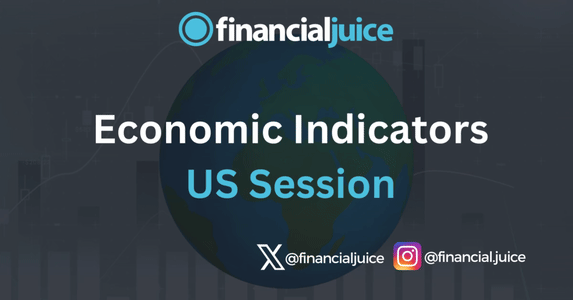
Week Ahead: Economic Indicators (US)
Hey, Traders!
For the May 13th week, here is a list of all of the major economic indicators being released during the US Session, with a brief synopsis of what they represent and what to possibly expect from the markets in reaction.
Tuesday 14th May
08:30 ET
US PPI for April
The US Producer Price Index measures the average change over time in selling prices received by domestic producers for their output.
It indicates inflationary pressures at the producer level and is often considered a leading indicator of consumer inflation.
A rise in PPI suggests increasing production costs, which could eventually lead to higher consumer prices.
What to Expect
If PPI comes in higher than expected this could be an upside risk to consumer prices because if producers are paying more to produce, then the price increases may be passed on to consumers.
This could lead to strength in the dollar and weakness in US Stocks, as this feeds into the higher for longer narrative.
The opposite could also be expected if it comes in lower than expected.
Wednesday 15th May
08:30 ET
US CPI for April
The US Consumer Price Index measures the average change over time in the prices paid by urban consumers for a basket of goods and services.
It tracks inflation by reflecting changes in the cost of living for typical households by monitoring the percentage change in prices paid for goods and services.
It is one of the most closely monitored gauges of inflation in the US.
What to Expect
If CPI comes in hotter than expected, this could show that consumers are paying more for the same goods and services.
This could then lean into the “higher for longer” narrative, and prove FOMC official’s fear of inflation progress ‘stalling’ to be true..
This could result in strength in the dollar and weakness in US Stocks.
if it comes in lower than expected, this could fight against the higher for longer narrative, and cause markets to push forward the chance of interest rate cuts this year.
This would cause strength in US stocks and weakness in the dollar.
US Retail Sales for April
US Retail Sales data tracks the total receipts of retail stores, including both goods and services purchased by consumers.
It reflects consumer spending behavior, which drives a significant portion of economic activity.
Changes in retail sales can signal shifts in consumer confidence, overall economic health, and potential trends in various industries.
What To Expect
If Retail Sales come in hotter than expected, this could show that consumers are buying more products, possibly meaning they have more money to spend.
This could be seen as an upside inflation risk, which could lead to strength in the dollar and weakness in US stocks.
10:30 ET
US Weekly EIA Crude Oil Inventories
The US Weekly Energy Information Administration Crude Oil Inventories report provides data on the total amount of crude oil held in storage facilities across the United States.
What to Expect
If inventories are higher than expected, it suggests that there’s an oversupply of oil in the market, which can potentially lead to lower oil prices.
Conversely, if inventories are lower than expected, it indicates that there may be a shortage of oil, which could lead to higher prices.
Thursday 16th May
08:30 ET
US Housing Starts for April
US Housing Starts is an economic indicator that measures the number of new residential construction projects begun during a particular month.
It includes the construction of both single-family and multi-family homes.
Housing starts are an important gauge of economic activity and confidence in the housing market.
An increase in housing starts suggests growth in the construction sector and overall economic expansion, while a decrease may indicate economic slowdown or reduced confidence in the housing market.
Additionally, housing starts can influence various industries, including construction, real estate, and home improvement.
What to Expect
NOTE: The markets rarely react meaningfully to this data point.
However, it is still a useful measure of economic sentiment, and worth noting as it can have an impact on different sectors in the economy, as listed above.
US Weekly Initial & Continued Jobless Claims
Initial Jobless Claims measures the number of individuals who filed for unemployment benefits for the first time during a given week.
It provides insight into the rate at which people are losing their jobs and serves as an early indicator of economic trends.
Lower initial jobless claims suggest a healthier job market, while higher claims indicate increased unemployment.
Continued Jobless Claims tracks the number of individuals who are receiving unemployment benefits for consecutive weeks.
It reflects the ongoing number of people who remain unemployed and are actively seeking work.
Like initial claims, a decrease in continued jobless claims signals an improving labor market, while an increase suggests ongoing challenges in finding employment.
What to Expect
Higher jobnless claims indicated higher unemployment.
As per the latest NFP report, the markets are still reacting on a ‘bad news is good news’ narrative on employment.
This means that a higher jobless claims number would be seen as a potential downside inflation risk, which could fight against the ‘higher for longer’ interest rate narrative, causing the potential for strength in US stocks and weakness in the dollar.



